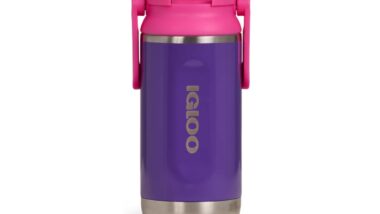Top Class Actions’s website and social media posts use affiliate links. If you make a purchase using such links, we may receive a commission, but it will not result in any additional charges to you. Please review our Affiliate Link Disclosure for more information.

Levaquin was introduced to the market in 1996. It’s one of the third generation of a type of antibiotics known as fluoroquinolones. Levaquin is now FDA-approved as a treatment for many kinds of skin, respiratory, and genitourinary infections, as well as other uses.
In the 1960s, non-fluorinated quinolone antibiotics were developed and effective at fighting gram-negative bacteria. It wasn’t long before bacteria started to develop resistance.
In the 1980s, fluorinated quinolones were introduced. These second-generation quiniolones were stronger and could fight both gram-negative and gram-positive bacteria.
Many fluoriquinolones have been taken off the market due to reports of serious side effects.
Levaquin and Aortic Aneurysms
A possible link between Levaquin and aortic aneurysms could result from the same mechanism of action that has led to many reports of tendon ruptures and tears in patients taking fluoroquinolone antibiotics.
The FDA made manufacturers add a black box warning regarding the risk of tendon ruptures when taking fluoriquinolones back in 2008. Tendon ruptures and tears were being seen in the Achilles tendon, rotator cuff, hand, bicep and thumb in patients who took fluoroquinolones.
Researchers believe that fluoriquinolones break down the body’s collagen, which is found in tendons and also in the lining of the aorta. This effect could explain the link between Levaquin and aortic aneurysms.
Studies published in two different medical journals in 2015 showed a link between the antibiotics and the type of collagen damage that could lead to aortic aneurysms.
One study published by JAMA found fluoroquinolones were associated with a two-fold increase in risk of dissection and aneurysm within 60 days of using the drug. Authors said, “clinicians should continue to be vigilant for the appearance of aortic aneurysm and dissection in high-risk patients treated with fluoroquinolones.”
Another study from BMJ reported nearly a three-fold increase in the risk of aneurysm. Nearly 1.7 million patients were followed and one third of them received a prescription for a fluoroquinolone. “Reducing unnecessary fluoroquinolone treatments or prolonged treatment courses might have possibly prevented more than 200 aortic aneurysms in this population,” researchers wrote.
What Is An Aortic Aneurysm?
An aortic aneurysm is the bulging of the wall of the aorta, the body’s largest artery. Bulges weaken the aortic wall, making it more likely to burst. Much like a balloon that has been blown up too much, part of the wall gives way and becomes thinner as it becomes stretched.
If an aortic aneurysm bursts, the patient’s chance of survival is only 50 percent.
Aortic aneurysms are difficult to diagnose because patients often have no symptoms until the aneurysm ruptures. A person will need immediate medical treatment if this happens and will experience difficulty breathing, chest pain back pain and might become unconscious.
Levaquin and aortic aneurysms may be linked because Levaquin could damage the cartilage that lines the aorta’s walls. Doctors take seriously the risk of taking Levaquin and aortic aneurysms, and so should you.
Join a Free Levaquin Lawsuit Investigation
If you or a loved one were diagnosed or hospitalized with an aortic dissection (aortic tear) or aortic aneurysm after taking Levaquin within the past 18 months, you may have a legal claim.
ATTORNEY ADVERTISING
Top Class Actions is a Proud Member of the American Bar Association
LEGAL INFORMATION IS NOT LEGAL ADVICE
Top Class Actions Legal Statement
©2008 – 2024 Top Class Actions® LLC
Various Trademarks held by their respective owners
This website is not intended for viewing or usage by European Union citizens.
Get Help – It’s Free
Join a Fluoroquinolone Aortic Aneurysm, Aortic Dissection Lawsuit Investigation
If you or a loved one were injured by a fluoroquinolone antibiotic aortic aneurysm or aortic dissection, you may have a legal claim. See if you qualify to pursue compensation and join a free fluoroquinolone class action lawsuit investigation by submitting your information for a free case evaluation.
An attorney will contact you if you qualify to discuss the details of your potential case.
Please Note: If you want to participate in this investigation, it is imperative that you reply to the law firm if they call or email you. Failing to do so may result in you not getting signed up as a client, if you qualify, or getting you dropped as a client.
Oops! We could not locate your form.












